Understanding the activation matrix
The Activation Matrix of Actito allows you to classify your profiles based on 3 criteria: recency, frequency and monetary value of their interactions with your brand.
With this profile identifier and reporting tool you can define a marketing strategy adapted to each profile category (allowing you to consolidate your most loyal profiles and boost those who tend to be inactive).
Getting started with the Activation matrix
Thanks to the Activation Matrix of Actito, you have an overview of all the interactions of your profiles.
The Actito team will configure the Matrix in your license.
A Matrix is linked to an interaction table. Therefore, it is important to set up your table before requesting the creation of a Matrix in your license.
Setting up the interaction table
The Activation Matrix of Actito classifies your profiles according to the recency, frequency and monteray value of their interactions with your brand.
The matrix calculates these criteria on the basis of the data stored in an interaction table.
Recency parametrization
By default, the recency is calculated on the creation date of the table lines (creationMoment). If you want the recency to be calculated based on another attribute (e.g. Date of order), please contact your account manager to make the necessary settings
Frequency parametrization
The matrix can be configured according to two types of cycles, the duration of which depends on your activity:
- The short cycle is suitable for businesses having high frequency visits in a short time period (such as: supermarkets, sandwiches shops, snacks, etc.)
- The mid to long cycle is suitable for businesses having moderate to occasional frequency visits in a short time period (such as: clothing stores, home appliance stores, etc.)
Frequency graduation adapts to the type of cycle selected. It cannot be modified.
Monetary value parametrization
To have a matrix adapted to your needs, you need to choose the attribute of the interaction table that will be used to calculate the matrix's monetary value.
To do so, go in the 'Tables data structure' app (Apps > Data > Tables data structure).
Select the table you want to set up and click on 'View'.
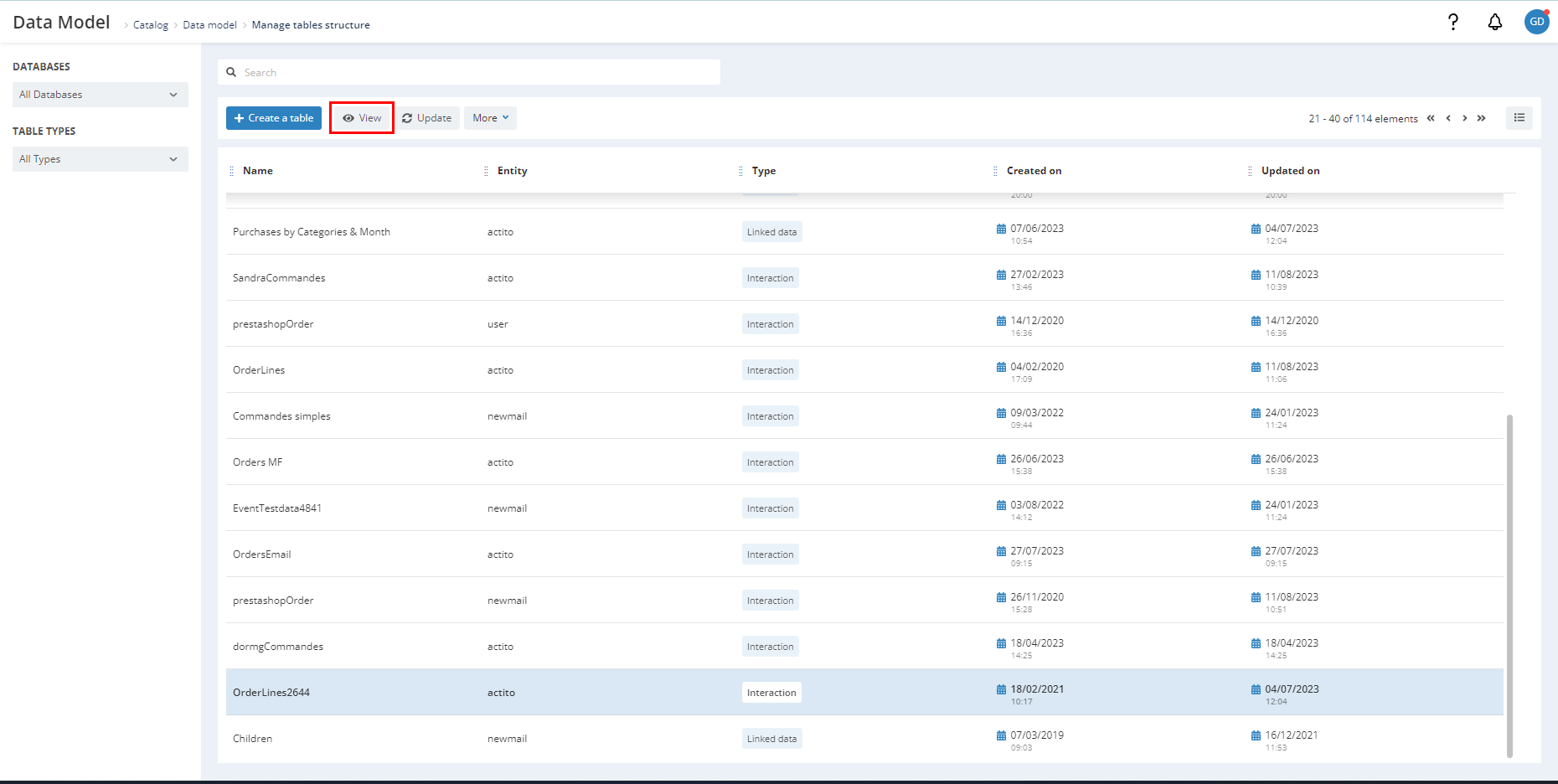
Then, select the attribute you want to define as monetary value and click on 'Set as value'.

Only the numerical attributes of an interaction table can be defined as monetary value of an Activation matrix.
View the Activation matrix
You can access the activation matrix directly from the 'Profiles' widget of your Dashboard.
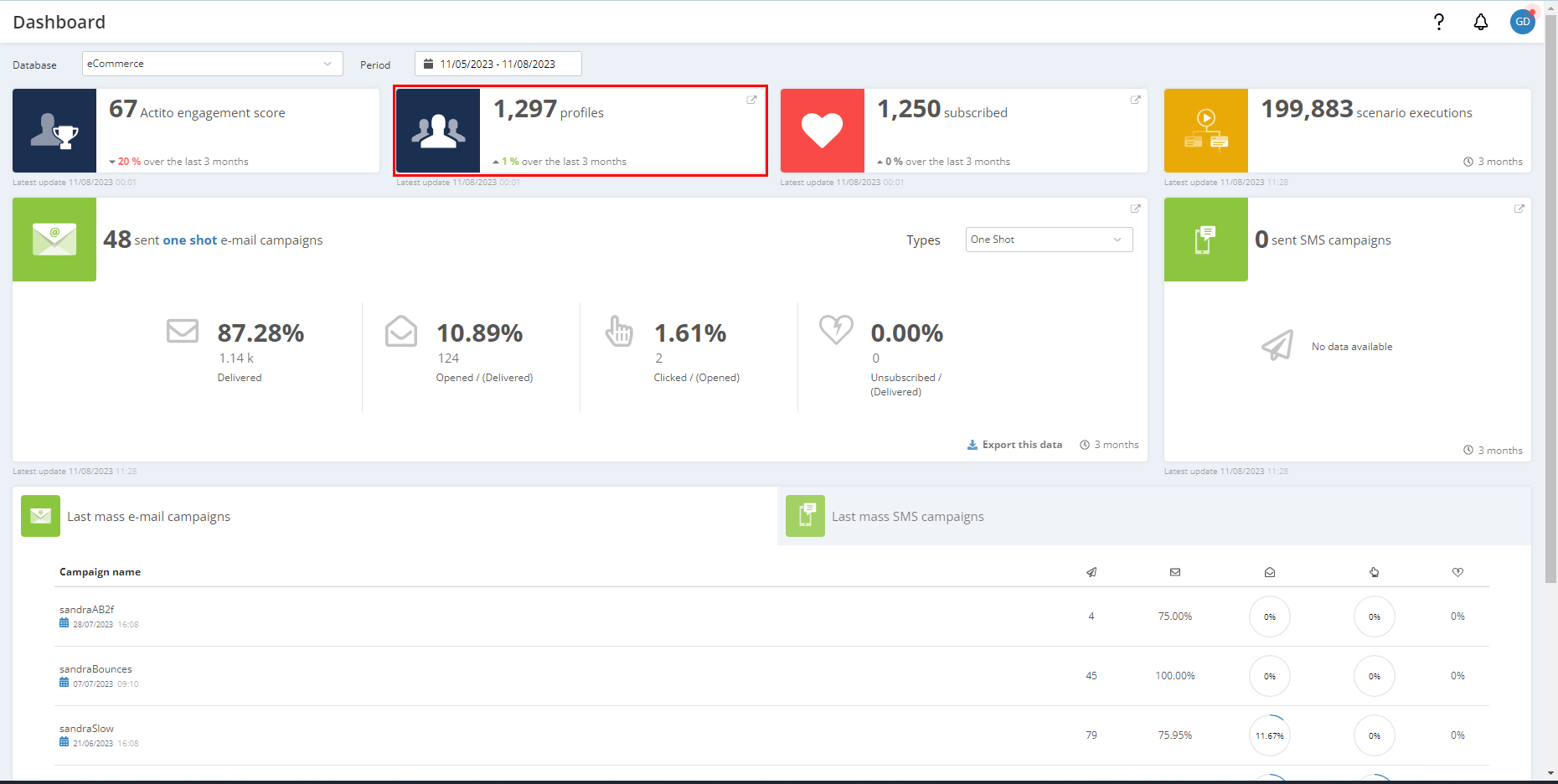
This widget is a shortcut that brings you to the 'Profiles reports' app (also available through Apps center > Reporting > Profiles reports).
You can navigate through the app thanks to the smart filter on the left side of your screen.
To access the activation matrix, choose the database linked to your Matrix and, in the filter 'Profiles behavior', click on 'Activation matrix'.
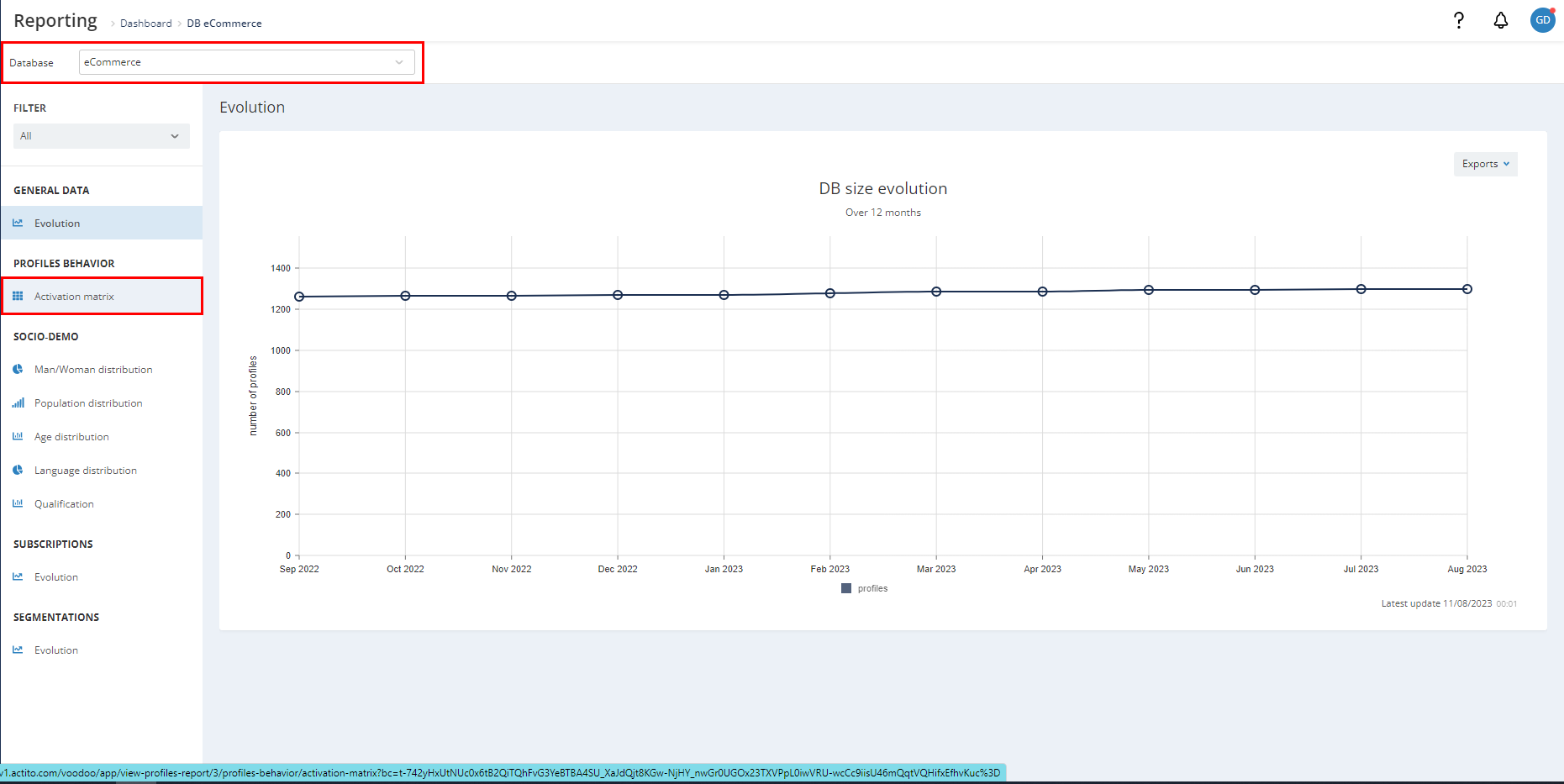
Understanding the Matrix
The views
The definition of an Activation matrix in your licenses generates two views inside the reporting.

Profile based Matrix
You will find the profile based matrix on the left side of your screen. It is the matrix with blue cells. It indicates the number of profiles for each segment. This matrix does not take into account the monetary value of the interactions, but only the recency/frequency of interactions for each profile.
Value based Matrix
You will find the value based matrix on the right side of your screen. It is the matrix with purple cells. It indicates the generated income of the profiles according to their segments and their distribution in terms of recurrence/frequency.
Cell color intensity varies within the same view according to the number of profiles/revenues that are in the cell. The higher the percentage is, the more intense is the color. If cells are empty, they are white.
Each view has a panel displaying general information about the matrix.
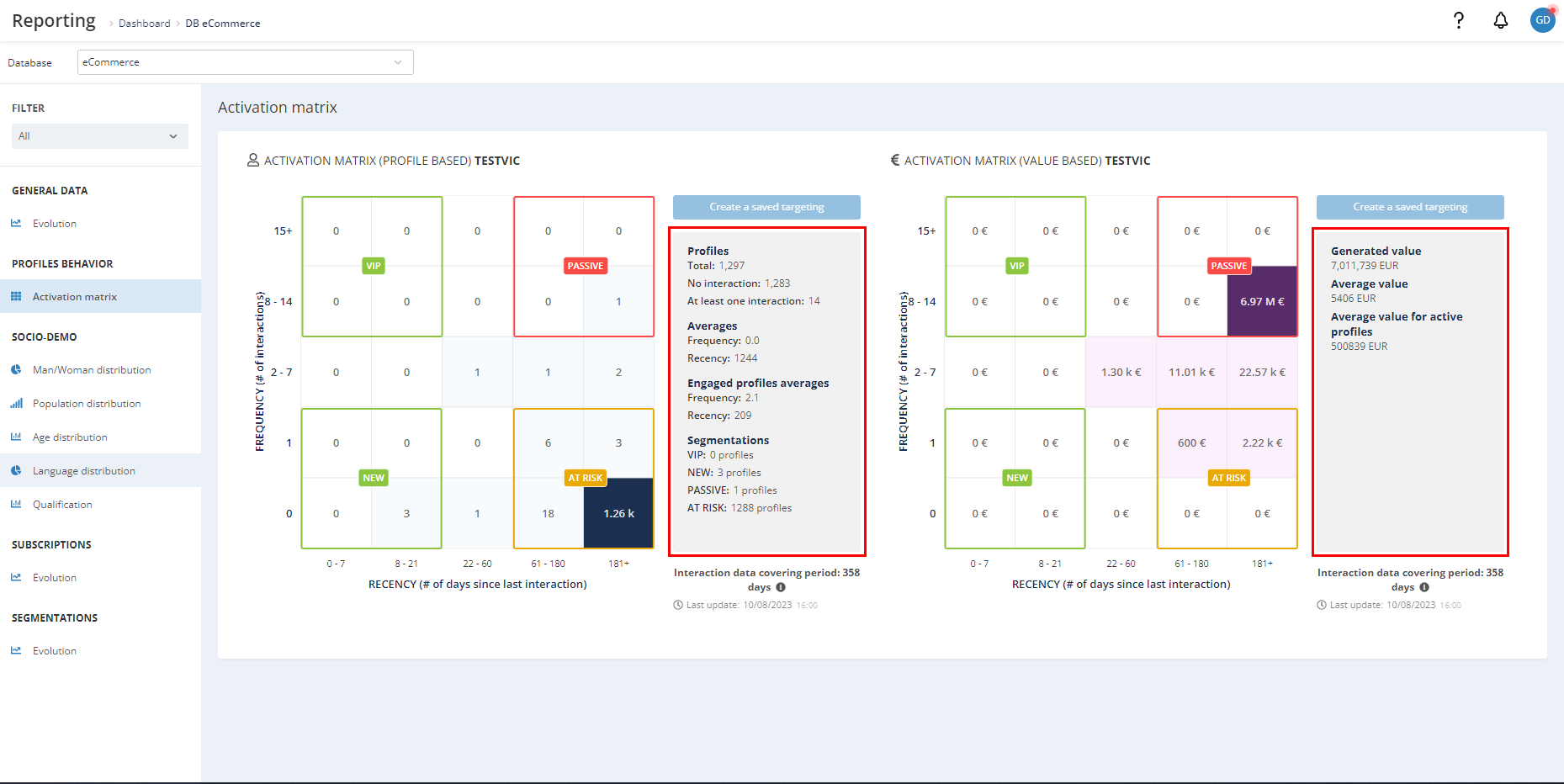
Data is updated once a day, therefore it is not calculated in real time
You can see the date of the last update below the panel.
You can see the period cover by the matrix below the panel. It is calculated from the oldest data stored in the interaction table.
The axes
Each matrix is composed of two axes :
- X-axis for the recency of interactions
- Y-axis for the frequency of interaction calculated in days
Values of the matrix
In Actito, an activation matrix is defined according to 3 values:
- The recency
- The frequency
- The monetary value
Calculation of recency
The recency is the last recorded interaction of profile on the interaction table linked to the matrix.
The calculation is made based on the creation date value stored inside the table. It can be:
- The creation date of the interaction table
- A field of the table defined as value
If there is no interaction date within the table, the matrix will take the creation date of the profile as value ('creationMoment' attribute). If you wish the recency to be calculated based on another attribute, please contact your account manager to the necessary stings
Calculation of the frequency
Frequency is the number of recorded interaction of a profile on the interaction table linked to the matrix.
Tables can contain several data per profile, enabling the frequency to be calculated.
Calculation of the monetary value
The monetary value is the sum of all the attributes set as value in the interaction table linked to the matrix.
The zones
The creation of an activation matrix Actito, leads to the creation of segments and automatic segmentation rules.
You can view these segments in your interface but you can not modify them.
They are represented in the matrix as 4 zones:
- VIP: In this zone, you will find profiles with a high frequency (that interact a lot with your brand) and for which the recency is closed (they interacted recently with the brand). These are profiles that have often and frequently interacted with your brand.
- NOUVEAU: In this zone, you will find profiles with close interactions frequencies and recencies. These are profiles that haven't yet interacted much with the brand, and whose interactions are recent.
- PASSIVE: In this zone, you will find profiles with a high frequency and a distant recency. These are profiles that have interacted with the brand but have not for some time.
- AT RISK: In this zone, you will find profiles with a less higher frequency and a distant recency. These are the profiles that no longer have much interaction with the brand, and whose interactions go back some time.
Visualizing the segments
To see the segmentation created by the Activation matrix, go in the 'Segmentations' app (Apps > Profiles > Segmentations).
Thanks to the filters, you can easily retrieve the segmentation created by the matrix.
Select the database to which the matrix is linked and select 'Automated' from the drop-down menu of the 'Linked to automatic rules' filter.

You will then have access to the segments linked to your matrix.
Segments are named as follow: <Name of the matrix> - <Name of the zone>.
Understanding the matrix targeting
The activation matrix simplifies the targeting on an interaction table.
Create a saved targeting
To create a saved target, click on the cells in the matrix for which you'd like to create a target, and then click on the 'Create a saved targeting' button.
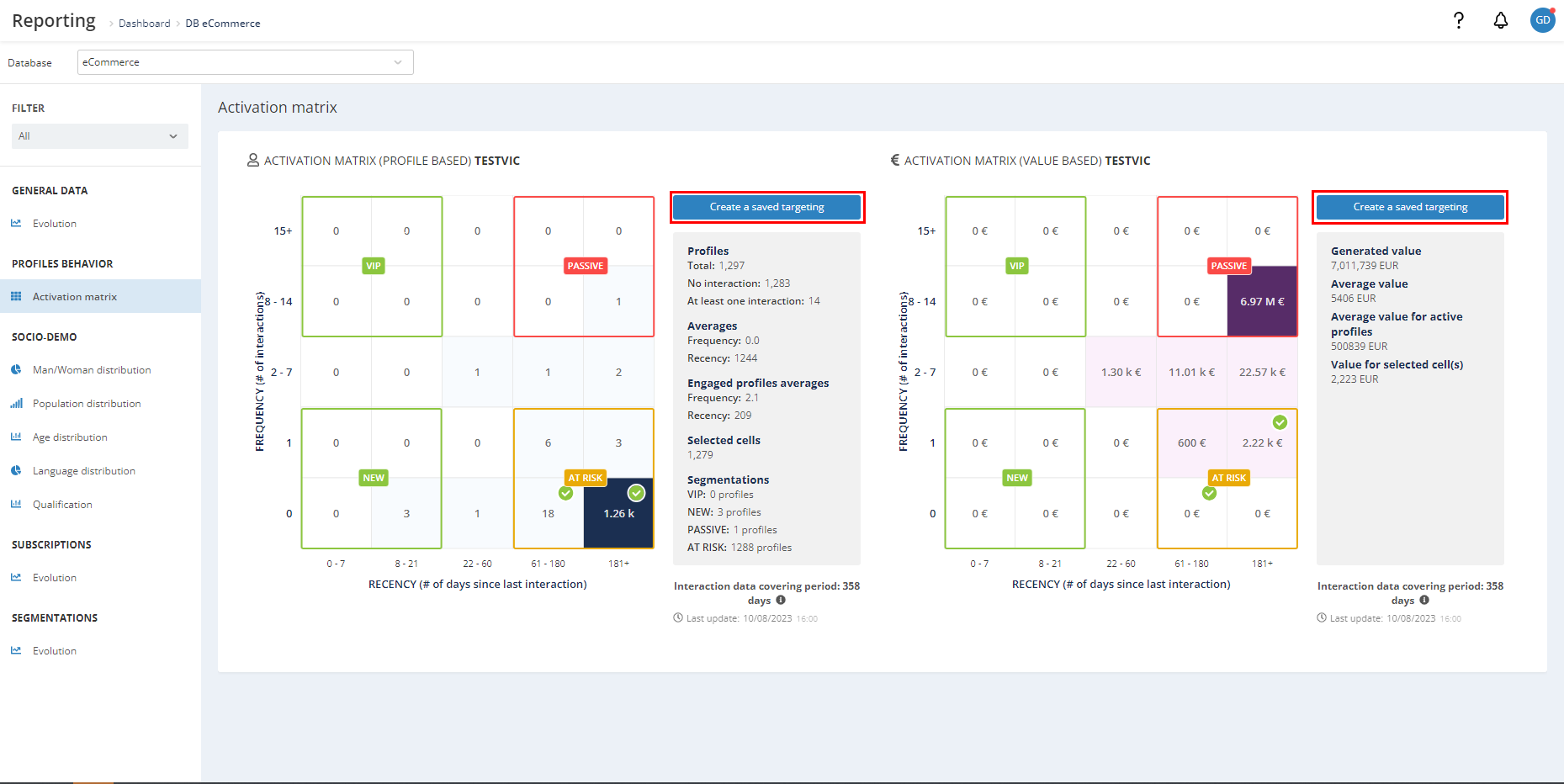
To select a cell in the matrix, simply click on it. A green icon will appear on the selected cells.
Once you have clicked on the 'Create a saved targeting' button, you will have to name your targeting.
By default a name based on the matrix is proposed.
The targeting created in this way is generated in the form of a '.txt' file. The target saved in this way is therefore a fixed selection of matrix cells at the time of its creation. For dynamic selection, please use the segments auto-generated by the matrix.
For more information about the targeting, please check the documentation
Targeting module
You can create a targeting on your matrix through the 'Targeting' app. To create your targeting follow the steps of creation of a targeting.
In the creation targeting window, select the targeting module on the interaction table linked to the matrix.
Then , activate the option 'RFM criteria'.
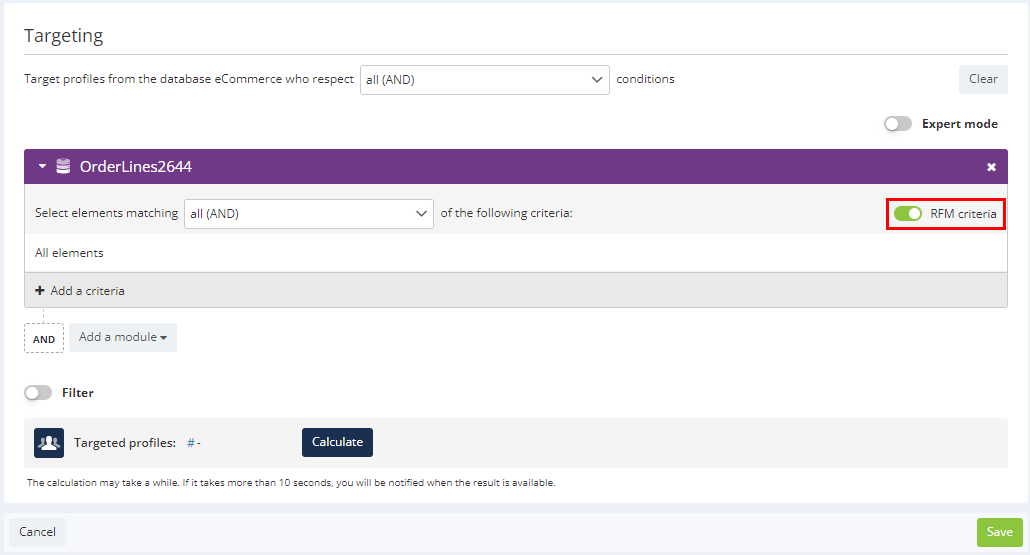
Once the option is activated, you will be able to define targeting rules on:
- The creation moment
- The frequency
- The total value of quantity
- The average value of quantity
- The recency
If you define another period attribute in your interaction table, you will be able to make a period targeting on this attribute.
Create a targeting based on the segments
To create a targeting on the matrix zones, go to the 'Saved targetings' app (Apps > Profiles > Saved targetings).
To create your targeting, follow the steps of creation of a targeting.
When defining your targeting module, select the 'Segmentation history' module. You can then choose from the drop-down menu the segmentation (matrix zone) for which you wish to define targeting.

The names of segments defined by the matrix <Matrix name> - <Zone name>.